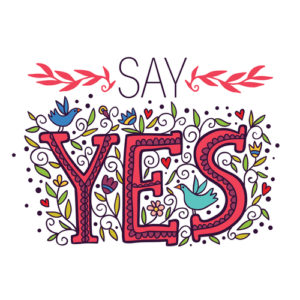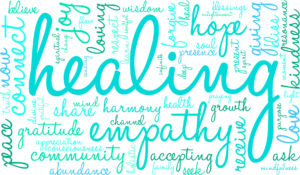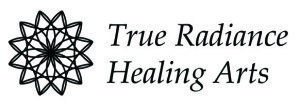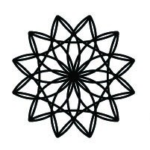tips for healing
How To Get Rid of Anxiety When Nothing Else is Working
/in Guidance, Healing, Making Changes/by Colleen Jamieson4 Ways to Cultivate Gratitude
/in Healing, Life Skills, Uncategorized/by Susan Pullen Practicing gratitude can help you feel happier, improve your relationships, and strengthen resilience.
Practicing gratitude can help you feel happier, improve your relationships, and strengthen resilience.
Our natural tendency is to focus on what we aren’t enjoying in our life, so practicing gratitude helps us to also notice and experience the good in our lives.
Personally, as I’ve kept a gratitude journal it has helped me to realize that sometimes good things happen without my having to create or control them.
The most important part of any practice is to allow yourself, to the best of your ability, to actually feel the gratitude. There are times when it can seem harder to feel our deep appreciation for the good things – it’s natural for us to have those periods. Practicing gratitude helps us to reconnect with the part of ourselves that can experience joy and appreciation.
When Feeling Gratitude is Hard
Try asking yourself, “What would it be like if I could feel gratitude?” You’re allowed and encouraged to use your imagination here, or perhaps remember a time when you felt that way.
You can also ask yourself, “What would it be like if I could feel gratitude even 2% more?”
Even asking these questions with no answer will help make space for an answer to come over time.
Sometimes it seems unfair for us to enjoy life when others we know are suffering. Out of loyalty to others we keep a lid on our own happiness.
If this resonates for you, try asking yourself, “Is this what this person would want for me?” and “Does it actually lighten their suffering when I don’t enjoy my life?” See if you can give yourself permission to honor their circumstances and also enjoy your own.
4 Ways to Practice Gratitude
There are many ways to practice gratitude – here are 4 options.
Keep a Gratitude Journal
A gratitude journal can be a literal journal where you write down 1-3 things you’re grateful for each day. Some people prefer to keep a visual gratitude journal – taking a photo to represent something you’re appreciating today.
I recommend aiming for 3 things – 3 new things – each day. You can be small and specific, so it stays fresh. For example, instead of writing “I’m grateful for my friends,” you would write, “I’m grateful for Anna sending me a note today.”
If coming up with 3 things feels challenging or keeps you from doing it, simply dial it back to noting 1 thing each day (or most days). Remember it can be a little moment or something obvious we take for granted (like, “I’m grateful for indoor plumbing”).
Go for a Gratitude Walk
Head out on a walk around the neighborhood, the park, or even around the house. As you walk, greet each thing you see and say, “thank you.”
“Thank you, tree.”
“Thank you, wind.”
“Thank you, pavement, for easing our drive.”
“Thank you, mailbox, for receiving my mail.”
“Thank you, telephone wires.”
Write a Thank You Note
Think of a person who has made a difference in your life – maybe someone who doesn’t even know that they’ve had this positive impact for you.
Spend a few minutes writing them a letter about what they did for you, what it meant to you, and thanking them.
You could simply mail this letter, but we could all use more meaningful connection these days. I encourage you to set up a time to read this letter to them – maybe on Zoom or FaceTime where you can see each other.
Do a Gratitude Meditation
Settle yourself for a meditation. This can be as long or as short as you like. Take a few breaths.
If you can, drop your awareness down into your heart.
Allow moments, people, things, even qualities in yourself, to come to mind as you inhale.
On the exhale, say out loud or in your mind, “Thank you.”
Mining for Gratitude
If you’re having a hard time thinking of things to be grateful for, here are some places to look:
- What sensations or physical experiences are you grateful for? Perhaps the warmth of a hot bath, or the feeling of your cat in your lap, or the smell of your favorite meal, or the satisfying feeling of muscles stretching and supporting.
- What qualities and skills are you grateful for? What are things you are able to do or character traits that you appreciate in yourself or others?
- What are you grateful to others for? Where have you experienced a moment of connection, support, or a shared smile?
- What are you grateful for spiritually? Are there spiritual resources you appreciate in your life? Do you ever have a sense of connection with nature or the divine that you appreciate?
For more on practicing gratitude, see our guide to Cultivating a Gratitude Practice below.
Whatever practice works for you, I hope you will take a few minutes to see how cultivating gratitude works for you.
With gratitude for you for reading this post,
Susan

The Neuroscience of Changing Habits
/in Healing, Life Purpose, Life Skills, Making Changes/by Susan Pullen (Reading time: approx 5 minutes)
(Reading time: approx 5 minutes)
Our culture tends to promote a “go big or go home” approach to changing habits, but it turns out that this is completely counter to what works with our brain.
Have you ever thought about changing a habit in your life – maybe starting an exercise routine or getting back into a creative hobby? We tend to make big plans for ourselves with goals like this. We might say to ourselves,
“From now on I’m going to _____ every day,” or “I’m going to set aside a whole day to _____”
These are examples of big changes in habits. Occasionally we’re able to carry out a big change like this for a little while, like a New Year’s Resolution that lasts for a few days or maybe weeks, but we typically don’t sustain them.
When our best laid plans begin to come apart and we find ourselves not sticking to the big goal we set for ourselves, there’s a tendency to beat ourselves up. We think the reason we weren’t successful is that we didn’t try hard enough, we got lazy, or we just don’t have enough willpower.
In fact, the number one reason our attempts at changing habits fail isn’t because of any shortcoming on our part – it’s because of our brain.
Deep in the midbrain is a structure called the amygdala. The amygdala is responsible for our fight, flight, or freeze response when we encounter a threat. This part of the brain is always on the lookout for things that are different – and it equates differences in our usual routine with potential threats.
Because the amygdala is closely tied in with the brain stem and the nervous system, it can trigger a reaction in the body before we think about it. When this happens, we often find ourselves on the couch watching TV, grabbing a snack, or pretty much doing anything except for the new goal we meant to do.
This system, while of great benefit when survival is at stake, is less convenient at other times. For example, when you decide you’re going to start exercising every day when you haven’t been exercising at all for a while. Since it’s not part of your usual habits, the amygdala can perceive this big change as a threat. The amygdala sounds the alarm and suddenly you find yourself in fight, flight or freeze – doing nothing, or perhaps chowing down on a donut, but almost certainly *not* exercising.
Meanwhile, wrapped around the midbrain is the cortex. The cortex handles all of our complex thinking: language, creativity, imagination, and strategy. When the amygdala is triggered, all of those resources are temporarily offline and the amygdala is in charge of our behavior.
This means that although we can use our cortex to set goals for ourselves, to imagine changes we’d like to make in our lives, and to make choices in our long-term best interest, all those best laid plans can come to a halt when the amygdala detects a difference in our routine.
Given this sensitive tripwire in our brain, how can we actually make the changes we want in our lives?
 The most effective way to make a lasting change or make progress on a big goal is to break it down into small steps. This approach is called “kaizen,” a Japanese word meaning “incremental daily improvement.” In this case, we’re talking about taking very, very small steps to accomplish a big goal or develop a new habit.
The most effective way to make a lasting change or make progress on a big goal is to break it down into small steps. This approach is called “kaizen,” a Japanese word meaning “incremental daily improvement.” In this case, we’re talking about taking very, very small steps to accomplish a big goal or develop a new habit.
Making changes using small steps allows us to sneak past the amygdala without setting off the alarm bells. Small in this case means 30 seconds to 5 minutes at a time, repeated over time.
Besides being an effective way to change habits in general, a kaizen approach to a changing habits is ideal if you haven’t been able to find the time or energy to start, if you’re a perfectionist, or if the idea of making the change is overwhelming or maybe even makes you a bit nervous.
Here are some examples of changes that work really well with a kaizen approach:
- Developing a writing habit by writing for 5 minutes – even just writing one sentence – a day
- Starting an exercise routine starting with simply putting on your exercise shoes, doing one stretch, or walking to the end of the driveway and back
- Drinking more water by filling a glass or bottle with water in the morning and keeping it with you
- Learning to meditate by reminding yourself to take a deep breath periodically throughout the day or by focusing on a mantra or affirmation for a few minutes at a time
- Practicing gratitude by sending a text to a friend every evening with one moment you are grateful for that day
- Getting back into a hobby you used to love, such as painting or swimming, by imagining yourself doing it, in as much sensory detail as possible, for one minute a day
The small step may seem absurdly small. You might wonder how such a little step could actually get you anywhere, but consider this:
- Even if you’re only writing for 5 minutes a day, that’s 25-35 minutes over the course of the week and about 2 hours in a month. That may well be more time than you’re spending on it now.
- Make the bargain with yourself to do the small step. If you feel like doing more, you can always do that. For example, if you set a small step goal of putting on your walking shoes and walking to the mailbox, you can always go to the end of the block and back instead if you’re feeling inspired.
- All our habits have corresponding neural networks in the brain. Those neural networks get reinforced and strengthened through repetition – not duration. In other words, in building a habit it’s much more effective to do something 20 times for 30 seconds at a time than it is spend 10 minutes doing it just once.
- Taking these small steps tends to make a goal feel more manageable and it increases our motivation to do them. We get a taste for it and after a little while it feels easier than it did before we started.
How small is small enough? Your small step should be easy enough that you can’t help but do it. If you find yourself not getting to it, take that simply as feedback that you haven’t made the step small enough. Lower your expectation of yourself even further until you can easily do it.
Given how minor and relatively quick it is to do, it helps to put a structure in place to help you remember to do it. A few examples of structures that work well are having a friend or partner do it with you, setting a reminder on your phone or calendar, or putting a sticky note reminder in a place where you’ll see it every day.
One last key to success with small steps: Give yourself credit for doing even the tiniest of steps toward your goal. It may feel a bit ridiculous to part of you (the part that thinks if you haven’t gone “all the way” then you haven’t done it all), but celebrating these small actions acts like gasoline on the little fire you’ve started. It stimulates the reward center in the brain, releasing neurochemicals that help to reinforce the new neural networks you’re building.
If you’re curious how a small steps approach might apply to your goals, I’m happy to talk to you about it. Just send me an email or give me a call.
The Role of Sacrifice in Healing
/in Healing/by Susan Pullen One morning some years ago I awoke to an internal voice saying, “A sacrifice is required.”
One morning some years ago I awoke to an internal voice saying, “A sacrifice is required.”
This statement was accompanied by the strong sense that I would be instructed as to what I was being asked to sacrifice.
My first reaction was that I wasn’t too keen on the idea. Although there were parts of my life I was unhappy with, they were still familiar and thus were somewhat comfortable. I wanted things to change without having to give anything up.
A day or so later I was driving to work when the voice returned. This time is said, “sacrifice the parts of yourself you love.”
I had to pull over to write it down. I followed the guidance and began a process of noticing, then finding within me a willingness to let go of, much of my sense of who I was.
I made a list of all the things I appreciated about myself – that I was conscientious, quiet, smart. Then I made a ritual of sacrificing them, acknowledging with each trait how I was also the opposite: selfish, loud, foolish.
When there were things I believed and liked about myself that I left off the list, a dream would come to remind me. The process was challenging, but also freeing. I knew I was creating space for a much more expanded, more genuine, and more whole version of myself.
Once I had made it through most of the treasured positive aspects of myself, I started examining the unflattering ways I viewed myself as well.
I began gathering up all the stories I told myself and others about my limitations: stories about the things I was no good at, the things I was too afraid to do, the things that would never go right for me.
Surprisingly, I found that these stories were even harder for me to let go of than the positive traits. I was really attached to these limitations; they let me off the hook for all kinds of things.
Yet, again, I found that when I was willing to let them go, to acknowledge that the opposite was sometimes true, a new freedom came with it. With this process, this became a transformative period in my life. I made my major changes and emerged happier, healthier, and feeling like myself in a way I hadn’t for years.
I don’t consider myself extraordinary for having done this. Any parent can tell you about sacrifice.
To sacrifice means “to make sacred.” It is a conscious, voluntary choice to give up something of value to you, with no expectation of getting it back. By making a deliberate choice to do this, we put the ego, with it’s desire for comfort and instant gratification, into the service of the Self, the deeper part of us. We reallocate our power to that which is best in us.
C. G. Jung believed that healing always requires a sacrifice – whether it’s giving up a cherished belief or viewpoint, a habit, or time and resources. Something must be given up in order for something else to be gained.
Healing may require us to let go of our blame, self-judgment, or attachment to the idea things should be a certain way. It may require us to give up a sense of identity that has become outdated or too small for us. On a practical level, healing may require us to remove certain things from our life, such as foods, addictions, or an unhealthy relationship or work environment.
To view this giving over as a sacrifice rather than simply something we have to stop or something that is being taken from us changes the energy of it. It becomes empowering because we consciously choose it. We choose it in the service of a healthier life, of being better.
What sacrifice is being asked of you for the sake of your own healing or growth?
What are you willing to let go of in the service of something greater?
With love,
Susan
Getting Questions Answered in Your Sleep
/in Dreams, Guidance, Healing/by Susan Pullen
Wouldn’t it be great if you had your own personal adviser who could offer you valuable guidance on your most pressing questions? Well, you do!
Your wise self is available to counsel you each night in your dreams. You can ask for guidance in a particular area through a process called “dream incubation.”
The idea of asking for particular assistance or for healing in a dream is not new; it dates back to at least 6 century BCE in Ancient Greece and Rome. Those seeking a healing, diagnosis, or other guidance would sleep in the shrines at Ephesus or Pergamon in order to receive a dream from Asclepius or one of the other healing gods.
Since at least the 1930s scientists have been intrigued enough by dream incubation to conduct research studies on problem-solving in our sleep. Some of these studies involved giving subjects puzzles, brain-teasers, or even crossword puzzles to look at just before bed. About half of the 76 college student subjects in a study by Deirdre Barrett felt they succeeded at dreaming the solution. In this same study, asking a question of personal relevance was found to be more likely to get a dream reply than academic or puzzle questions.
You can incubate a dream for:
- Solutions to a problem: Scientific breakthroughs have come through dreams, such as chemist August Kekule’s dream of a snake biting its own tail prompting his discovery of the structure of the benzene ring.
- Inspiration on a creative project: The Surrealists are one example of a group of artists who used dreams as creative fodder for their art. The Bureau for Surrealist Research even started an archive for dream imagery. I’ve worked with clients who received entire songs in their sleep and I myself have received ideas for jewelry designs, other artwork, and writing.
- Visiting a loved one who has died: I have had several dreams visits from friends and family who I missed and asked to see.
- Guidance in a particular area of your life: Once while on a retreat where I was engaged in personal growth work, I asked for a dream to give me a status report: What had I accomplished? What was the next most important thing to focus on? I had 8 dreams that night!
- Direct healing: On one occasion when I had a nasty headache I asked for healing in my sleep. I dreamt of a ninja shooting me in the temple (the location of my headache) with an acupuncture needle that had a little wire with mild electrical current running through it. When I awoke the headache was gone.
Ready to try it for yourself? The instructions are simple:
- Before going to bed, you may want to place a visual reminder of your question on the nightstand beside the bed. This will help to remind you of your question when you wake up, increasing the chances of recalling any dreams.
- As you are falling asleep, repeat the question or request over and over to yourself.
- Upon waking, make note of any dreams, dream fragments, images, phrases, or a song in your head that you can remember from the night in your dream journal. Even if it doesn’t appear related at first, write it down anyway.
- Look over your dreams (or dream fragments, songs, memories, etc) from your dream journal to see what they might be saying in response to your question. You might want to talk over your dreams with a friend or professional to get a different perspective. You could also take your dream to a dream group or send it in to our radio show to be interpreted.
- The answer to your question may not come right away. Sometimes there are other subjects of greater importance for your dreams to address, or you may not remember any.
- Be on the lookout for the answer showing up in waking life, too. There can be a synchronicity or sign that stands out to you, such as overhearing a comment by someone else in line at the grocery store that’s relevant to the very question you asked.
You can on occasion incubate a dream without fully intending to, simply by thinking a lot about or speaking about a topic that’s on your mind. You can also incubate a dream to receive guidance for someone else.
I have found it quite empowering to be able to receive guidance on the questions that are close to my heart. Your own wise self is ready and willing to offer assistance with any area of your life. I hope you enjoy getting to know this part of yourself better.
With love,
Susan
Removing Blocks in Your Energy Field
/in Healing, Life Skills/by Susan Pullen If you’ve ever taken a yoga class, you’re probably familiar with the idea that you have an energetic system in addition to your physical body, your mental and your emotional aspects.
If you’ve ever taken a yoga class, you’re probably familiar with the idea that you have an energetic system in addition to your physical body, your mental and your emotional aspects.
One classic way to learn to feel energy is to rub your hands together for a few moments, then hold them about a foot apart. Your hands will probably tingle a little. As you slowly bring your hands together, at a certain point you will feel a sort of bubble between your hands. You can play with it by slowly bringing your hands further apart and then closer together again.
Here’s another experiment you can try right now. While you’re sitting down, try lifting one of your legs and get a sense of how heavy it is. Now put it down and try lifting your other leg. Often you will notice that one leg seems heavier than the other.
Why is this? For most of us, it’s not that one leg is fatter than the other or anything like that – it’s more likely to be the case that energy isn’t flowing as well through the heavier leg.
You can test this, too. This is a technique for moving stuck energy called, “thought stripping.” Begin with the heavier leg. Take your hands and wrap them around your upper thigh. Slide your hands down your leg, down your foot and all the way off the tips of your toes. Now you’ve collected some of that built up energy in your hands. Dispense with this old energy by throwing it someplace safe like into a lamp, a candle, a fire, a bowl of salt water, or something like that.
Do this same process – wrapping your hands around your upper thigh and sliding them all the way down and off your toes, and responsibly disposing of the old energy – about 10 times.
Now try lifting each leg again. I think you’ll find that the leg that started off heavier is now the lighter leg. You can do the same process with the second leg.
Now you’ve experienced what it’s like to free up stuck energy, and how that made a difference in your legs. This is just one way of moving energy.
Your energy naturally has a movement or flow to it and when it’s not moving, it can feel heavier. Another sign that your energy may not be flowing in a particular area is if you find it’s harder to bring your awareness into a certain part of your body, or maybe it feels numb.
You can experience stuck energy on a mental level as not being able to accept something or having a hard time letting it go. On an emotional level, stuck energy can show up as either having a hard time connecting with your emotions or as a feeling that doesn’t shift.
In your physical body, energy that isn’t moving or that doesn’t belong in your field can cause uncomfortable symptoms or illness.
As you go about your life, your energy can become stuck or blocked for a variety of reasons. Often it’s an emotion or even a thought that has an energetic form and gets caught in the body. This could be your own emotion or even someone else’s.
You may have noticed that sometimes when someone is mad at you or jealous of you, you can feel it. We have the expression that someone “stared daggers at you.”
Some years back I was having a conversation with someone who misunderstood a comment I made and got angry. A couple of moments after this I felt a sensation like hundreds of darts landing in my upper body and arms. This was energy coming from her into my field.
If you were listening to our radio show a couple of weeks ago, you heard that shamanism is a thousands-of-years-old set of practices for healing and guidance with the help of spirit allies. In shamanic terms, energy that doesn’t belong in your field is called an “intrusion” and the process of removing it is called “extraction.”
You can do some kinds of extraction work for yourself, such as the thought stripping technique I described earlier. You can also enlist the help of a practitioner and their spirit allies. There are instances where your guides, angels, or other spirit allies will step in to assist with this work – typically at your request and with your permission.
You can always ask the Divine, your angels, and your other spirit helpers for assistance with this. Specify in your request that this extraction or clearing happen in Divine timing, in the perfect way, and in accordance with Divine will, if it serves your Highest Good. This is important because sometimes you are learning something or benefiting on some level from having the block in your field.
When your energy is flowing freely again you will likely feel lighter, more energized, and “more yourself.”
With love and best wishes for your well-being,
Susan
Opening Your Heart to Your Emotions
/in Healing, Life Skills/by Susan Pullen
![]() Last week I posted about the importance of Saying Yes to Healing. In that post I touched on how, when we don’t allow ourselves to experience an emotion, we end up protecting ourselves – more specifically, protecting the part of us that feels hurt, sad, angry, etc. This prevents the natural flow that would cause the emotion to dissipate.
Last week I posted about the importance of Saying Yes to Healing. In that post I touched on how, when we don’t allow ourselves to experience an emotion, we end up protecting ourselves – more specifically, protecting the part of us that feels hurt, sad, angry, etc. This prevents the natural flow that would cause the emotion to dissipate.
Why don’t we allow ourselves to fully experience an emotion at the time it comes up for us?
There are times when it may not be safe or appropriate to experience an emotion fully – for example, during a meeting at work, in an emergency situation where we need to respond, or in some situations with our young children. Growing up, we may learn that certain emotions are not acceptable in our family so we learn to hide them.
Unless we make a point of making room to feel those feelings at a better time (after the work meeting, when the emergency is over, when we have a little time away from our kids), those feelings go into storage in the body.
One of the primary reasons we resist our feelings is because they can be uncomfortable. We would rather not feel anything than have to be with our suffering.
We add to the discomfort by judging our feelings: we tell ourselves, “I shouldn’t feel this way” or “I don’t have a right to feel this strongly about it; it was just a little thing.” We deny emotions that we think would threaten a current relationship in an effort to keep the peace.
As time goes by, we can make a habit of ignoring or denying our feelings. We develop a strong mind that attempts to deal with emotions by talking us out of them, encouraging us to “be reasonable.”
After a while, we may not even be aware of our emotions in the moment. They may occur to us hours after the event that triggered them, if at all.
These feelings don’t just go away, however; they collect in the body. When we lose our awareness of our feelings, we lose a critical connection to knowing ourselves. Carrying the unfelt feelings can weigh us down and put a drain on our vital energy. Our heart center becomes clogged and closed.
When we give ourselves the time and space to deliberately turn our attention to our feelings, they can begin to move.
Noticing our emotions
If we are in the habit of sequestering our feelings from ourselves and living in our head, then the first step is deliberately noticing what emotions are present for us in a given moment.
Go ahead and ask yourself right now… What am I feeling right right now?
Naming our emotions
Labeling our emotions can be helpful in allowing us to be present with them without feeling swamped by them.
See if you can be aware of your emotions without having to change them – even without having to explain or justify why you feel this way.
Having self-compassion
Being kind toward ourselves supports us in allowing our feelings to be present without judging them.
When you are having a hard time, imagine giving yourself a hug and saying something supportive to yourself, as you would do for a good friend.
Like changing any habit, it can take some practice before we are aware of our emotions in the moment they come up. As we open ourselves up to this flow, gradually unpleasant emotions stick around for less time and there’s more room in our life for joy, gratitude, and love.
Wishing you abundant joy and love,
Susan
Saying Yes to Healing
/in Healing, Life Skills/by Susan Pullen What’s the single most important thing you can do to heal?
What’s the single most important thing you can do to heal?
The answer is: to say “yes” to healing.
When we get hurt, either physically or emotionally, we tend to withdraw. A part of us pulls back and puts our guard up. This could take the form of muscles tensing up around an injured part of the body, or pulling away from other people after a difficult social interaction.
In this pulling back we resist the flow – of energy through the body, of emotions that we don’t want to feel.
This can also happen when an event comes up in our life that goes against our idea of what “should” be. When we don’t want to accept what is, it’s as though an inner part of us crosses their arms, plants their feet and becomes immovable. This inflexible part of us stops the natural fluidity of our emotions and our life force energy.
Without flow, without allowing movement to happen, at least part of us remains stuck in our original hurt state. It’s ironic that our efforts to prevent further pain (in the form of guarding, protecting, hardening up) are the very thing that keep us from healing.
The body and the heart have an innate drive toward healing. If you cut your finger, unless some additional insult is introduced (like bacteria), it will heal on its own.
 When we are guarding ourselves, we are essentially saying “no.” No, I won’t move; no, this isn’t really happening; no, I won’t forgive or forget; no, I won’t let this go because I don’t want anything like it to ever happen again.
When we are guarding ourselves, we are essentially saying “no.” No, I won’t move; no, this isn’t really happening; no, I won’t forgive or forget; no, I won’t let this go because I don’t want anything like it to ever happen again.
We put all our focus on what we don’t want — what we are saying “no” to in life.
Saying “yes” to healing begins with giving ourselves permission to heal. It means softening where we had hardened, relaxing where we had tensed up, and being willing to see what is happening now. This doesn’t mean condoning or approving of whatever it was that caused the injury; it means being willing to be where we are. From this place we can begin to envision what we would like instead.
As we say “yes,” we allow the forces of nature to assist in our healing. We allow the movement that has wanted to carry us toward resolution all along.
Where have you not been willing to let something go?
Where are you resisting accepting the facts of a situation?
What are you focused on NOT wanting?
These questions will point you in the direction of where you’ve been withholding healing.
If you are willing, take a moment right now to say “yes.” Close your eyes, take a few breaths, and give yourself permission to heal. Imagine opening up to the energy of life and allowing it to move through a particular situation or through all areas of your life.
Saying “yes” unlocks the door – the one we had closed shut when we got hurt – so healing can happen. We can take this a step further by asking for assistance on our healing journey. Stay tuned for next week’s post about asking for help, especially when you’ve been reluctant to do so.
Much love,
Susan
Better than a Magic Force-field: Dealing with a Difficult Family Member
/in Healing, Life Skills/by Susan PullenIn a couple of hours I’ll be taking my aunt to a doctor appointment. This is something we do quite frequently given that she has Alzheimer’s Disease and I am her Power of Attorney for Health-care.
My aunt can be quite an intense person — very judgmental, self-centered and with a strong temper. I still remember the dents in her car which she herself put there by beating it with her briefcase when she got angry one day. That was many years ago, when she still had all her faculties.
A couple of years ago, before each visit I would call in every kind of psychic protection I could think of. I did my best to let her rage and lashing words bounce off of me, but maintaining that level of vigilance could be exhausting.
My interactions with her became so difficult for me that my doctor told me he was concerned I’d have a stroke. And yet, while I could hire help with some things, I couldn’t simply opt out of my relationship or duty as Power of Attorney. I needed to find a better way to handle it.
One day I received this guidance: “be more like a beach and less like a wall.” In my mind I could see the waves rolling onto the beach and then rolling back out again. I understood the message. If I don’t resist her negativity, it can pass just as easily as it came to me. If I argue against it or try to block it then that’s when I feel damaged.
I imagine the martial arts masters who avoid an oncoming attack just by turning to one side and letting the attack pass by them. When there is no place for the attack to land, when I don’t try to block it or attack back, then it simply falls flat.
Here are the secrets I’ve discovered to surviving our encounters:
- Limit my time with her. This includes giving myself permission to leave, even if I’ve only been there a few minutes. Granted, sometimes we have to go to an appointment and, as much as I might want to, I can’t leave her on the curb to get home on her own. A certain amount of time together may be required. That’s when the rest of this list becomes really helpful.
- Don’t take things personally. This is the one thing that, when I forget it, creates the most grief for me. If (ok, I’ll be honest, WHEN) she says something that really gets under my skin, I can usually trace it to something I’ve taken personally that wasn’t really about me. For example, at our last appointment the doctor asked her how often I come to visit. She replied, “3 or 4 times a year.” In fact I had just seen her two days earlier. I have the option of taking this personally and getting wound up about it, feeling defensive or insulted…or I can remind myself that her sense of time and the words she uses about time (months, days, years, hours) are very loose concepts at best. Truthfully it has nothing to do with me.
- Give it a “pass.” I think of many of my aunt’s comments as invitations. They are invitations for me to engage in an argument or an opportunity to allow my feelings to be hurt. Most of the time I’m able to let these invitations go by without responding to them. Sometimes in my mind I imagine stepping aside and watching her words fall on the ground beside me.
- Aftercare. It helps me to talk about our visits. Usually I can just tell the story once or twice and be done with it. If I feel compelled to keep re-telling it, I refer myself to #2 on this list. When I get home I like to shift my attention by going for a walk or watching a clip of kittens on Facebook. A good shower or smudging can help, washing away any residue from our interaction that I might have brought home with me.
My aunt is only in her sixties, so I expect I’ll have time to further refine my approach. In the meantime, I hope this is helpful to those of you who, like me, have family members whose welfare is your responsibility but who can take a toll on your own well-being.
If you have thoughts or comments, I’d love to hear from you. You can reach me through the Contact page.
With love,
Susan
About
True Radiance Healing Arts offers workshops and individual sessions for life coaching and healing in Edmonds, Wash. Owner and Healing Facilitator Susan Pullen has more than 20 years of experience in helping people with chronic pain, spiritual exploration, and getting unstuck. If you’re looking for help discovering your life purpose, contact us today!
Although our soul healing, family constellations, spiritual mentoring, and life coaching modalities can be a great complement to working with a healthcare provider or therapist, our work and the information here is in no way intended to substitute for proper medical or mental health care.
Hours
- Monday: 9 am–6 pm
- Tuesday: 9 am–5 pm
- Wednesday: 9 am–5 pm
- Thursday: 9 am–5 pm
- Friday: 9 am–5 pm
Evening and weekend appointments are available; contact us with your needs.



